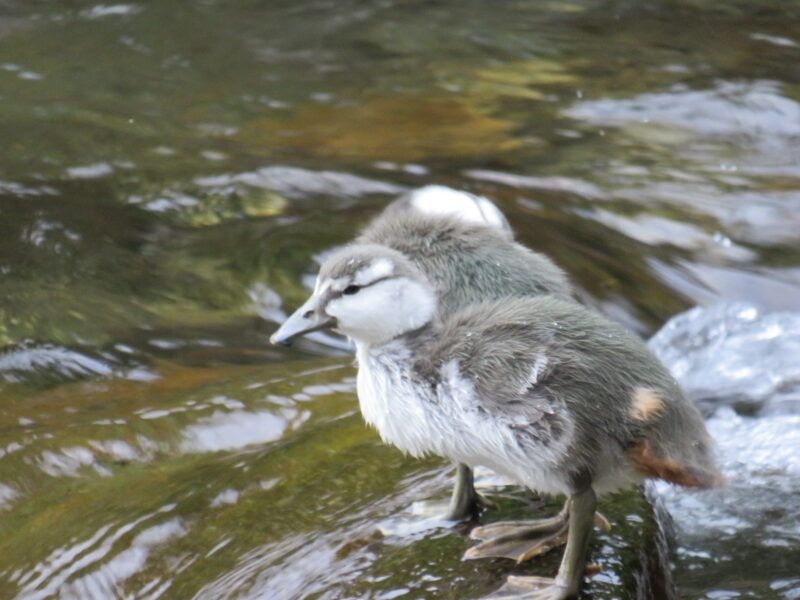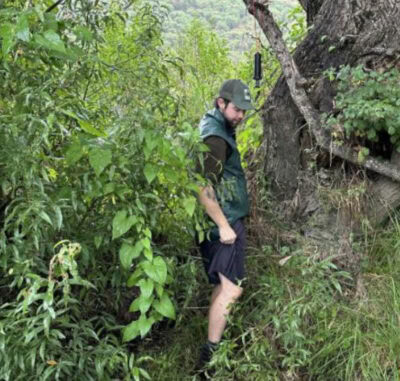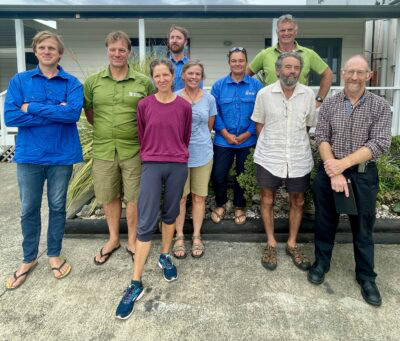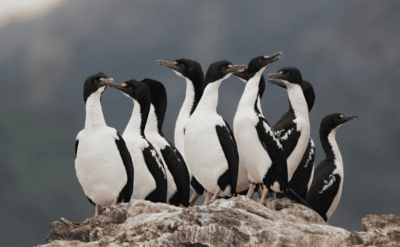In a season that didn’t bode well for whio ducklings, sighting two of them on the Graham River last month was a welcome relief.
Whio/blue ducks are tough. Fast-flowing alpine rivers are their thing. Their babies are expert at navigating white water from just a day old but even these staunch little dudes have their limits. With heavy rainfall and flooding in Tasman over spring and early summer, there wasn’t much hope that many would survive.
So spotting a male whio with two ducklings on the Graham River in January was an encouraging find for Farmers for Whio trapping field officer Barry Burger and DOC science technician Jason Malham. The female was nowhere to be seen but after finding evidence of moulting further up the river, they concluded she was probably moulting under the riverbank.
Barry says the ducklings looked close to being able to fend for themselves.
“That normally happens when the parents start moulting,” he says. “They slowly start to get pushed off and find their own territories, so they’re almost ready to go.”
High numbers of whio predators caught
With whio making their way into the Graham, Pearse and Baton Valleys from Kahurangi National Park, the Farmers for Whio trap network will give the birds some much-needed protection.
“It’s early days for trapping but there have been pretty high numbers of stoats and weasels caught in the last couple of months, so it’s all gotta help,” says Barry. “The whio are vulnerable, especially at the moulting stage. They might be tucked away but they’re still pretty exposed.”
He says other whio pairs have been spotted without ducklings this season and it’s unclear if the pair that produced a clutch of six young last year had returned this time around.
“That section of the river was surveyed with no ducks found but we still have to do the north branch of the Graham to see if there’s evidence of birds up there as well,” says Barry.
“Their nesting success can depend on lots of things including stoats and weasels but also flooding periods and the condition of the ducks going into breeding season,” he says. “It’s hard to pinpoint the exact reason why there’s fewer or more ducklings.
“Hopefully, in time the numbers will just keep going up as we keep on top of these pests anyway.”
Which would be great for whio, and great for the dedicated landowners who’re putting time and energy into giving these determined little battlers a fighting chance.




